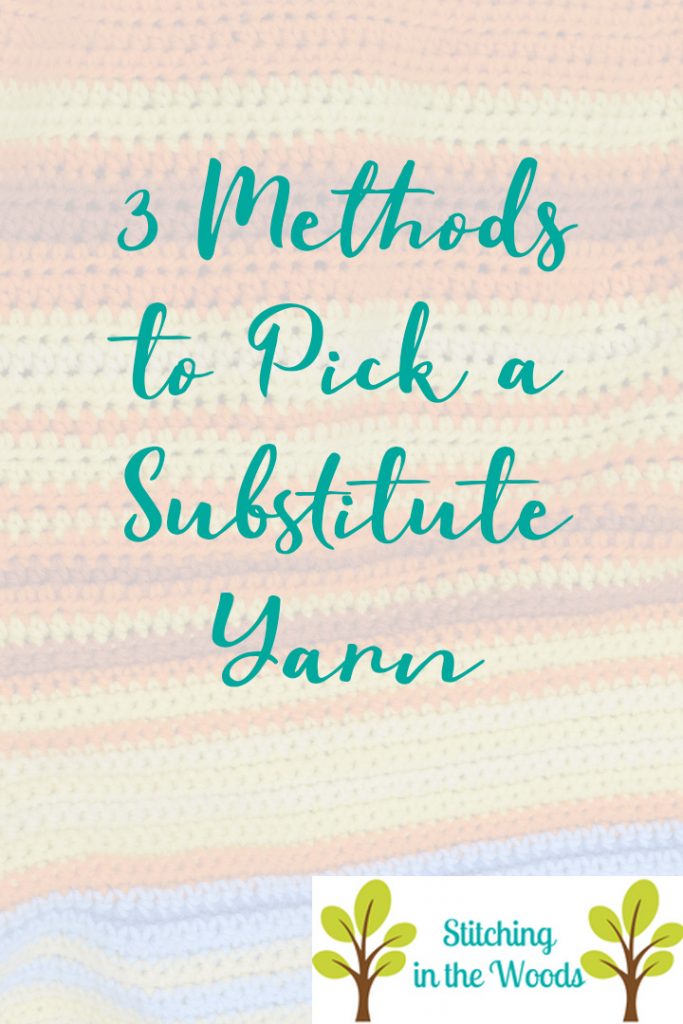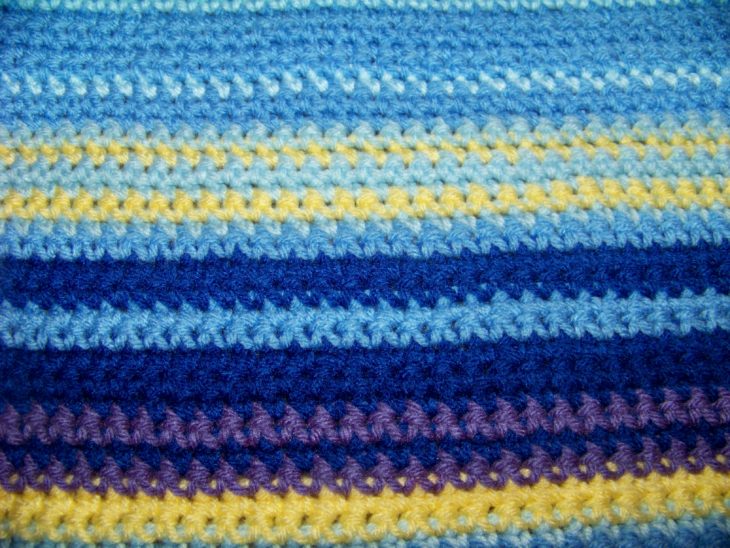Anyone who’s been crocheting or knitting long has run into the same problem. You see a pattern you just HAVE to make. After checking out the pictures, sizing, and maybe the “difficulty” level you look at the supply list. Then your excitement fizzles faster than a deflating balloon. You don’t use that yarn or you know it’s discontinued, so you’ll need to substitute another yarn.
There are any number of reasons that a yarn doesn’t work. Maybe it’s super expensive. It may not come in the colors you want. Discontinued yarns are common. It could even be that it’s one you’ve sworn you’d never use again. (We all have at least one.)
Don’t despair!
After running into this multiple times (enough that I find it odd when I actually did use the suggested yarn), I’ve developed several methods for substituting yarns.

Method #1: Weight Category
This method is the easiest one. You simply look at the Craft Yarn Council (CYC) weight category ranking number and pick another yarn with the same number. Easy, right?
I recommend this method with a grain of salt, however. Generally it can be a straightforward way to compare yarns. The problem is it’s not accurate for all yarns. I touched on this in my Demystifying Temperature Blankets series.
The broad categories can lead to variations in your work. The thinner or thicker the yarn the smaller or bigger your project could be. Of course, checking for gauge will help. But you may still not be able to make gauge if the difference is too great.
Most yarn labels also come with a recommended gauge on them. You could use this gauge to compare different yarns. That way they might be a bit closer in size.
Method #2: Ravelry
You can use Ravelry to search for other yarns that are similar to your discontinued/unwanted/hated yarn. If you have a Ravelry account, then you can log in to search. Otherwise, if you do an internet search for the yarn, the Ravelry result should pop up and you can get in that way.
Ravelry doesn’t specifically use the CYC weight categories. They list yarn based on weight, but use labels like DK, sport, worsted, aran, heavy, etc. These can be a bit more accurate than the CYC categories, but there’s still variation.
What you want to focus on is the WPI, or wraps per inch, of the yarn. This tells you how many wraps of the yarn it takes to reach an inch. You can find a tool to test the WPI on your yarn from places like Knit Picks. (affiliate link)
Method #3: Yarn Substitution website
The last method is that you can look it up on Yarn Sub. This is very different from the other methods. You simply enter the name of the yarn you’re replacing and it kicks out a ranked list of results.
These results are ranked based on several aspects of the yarn. Some of those aspects are cost, gauge, and fiber content. Each yarn is compared to the searched yarn and is given a percentage match.
“That sounds super easy! Why didn’t you put this method first?”
I agree it’s easy. It’s even easier when you do an internet search and click on the Yarn Sub page in the results. But there are a LOT of results and they can be difficult to sift through. That’s why I recommended the other methods first. There are filter to help sort your search, but I’ve found filters can sometimes do more harm than good.
Here are some sample results. I searched for substitutes to Knit Picks Brava, worsted weight. (affiliate link)
Method #4: Your Local Yarn Shop
Yeah, I said 3 methods. I decided to sneak this one in, but I know not everyone has a local yarn shop. In this method you simply find the yarn from the pattern supply list. Then you carry it around until you find another yarn that matches it in texture and thickness. Then you buy both of them. Because who can resist yarn, right?
If they don’t have the yarn, you can ask an employee (who may very well be the owner or a family member) what they think a good substitute would be. Since yarn is their business they should be able to help at least some. Then you can get a recommendation and start up a relationship.
One of the cons of this method is you may end up with lots of pretty, squishy yarn that you didn’t plan to buy. Did I say a con? Sure it’ll sit around for a while, but it’ll brighten up your space until you find just the right pattern for it.
My local yarn shop is The Clay Purl in Nashville, IN. Due to recent events forcing them to close for a little bit, they deliver! And I’m sure if you drop a question to them, they’ll be more than happy to answer.
So there you have it. 3, or 4, methods to pick a substitute yarn. Now it won’t be a problem at all if you don’t like or can’t find the recommended yarn. That means you can spend less time planning your project and more time crafting!
(By the way, substitution is one of those words that if you use it too many times it starts looking wrong.)
Pinterest image coming as soon as I can get my computer to behave.
Do you use another method to pick a substitute yarn? Let us know in the comments!
FREE Temperature Tracker!!!!
Enter your email address and you'll get a completely free, ready to print temperature tracker to use for your project.




